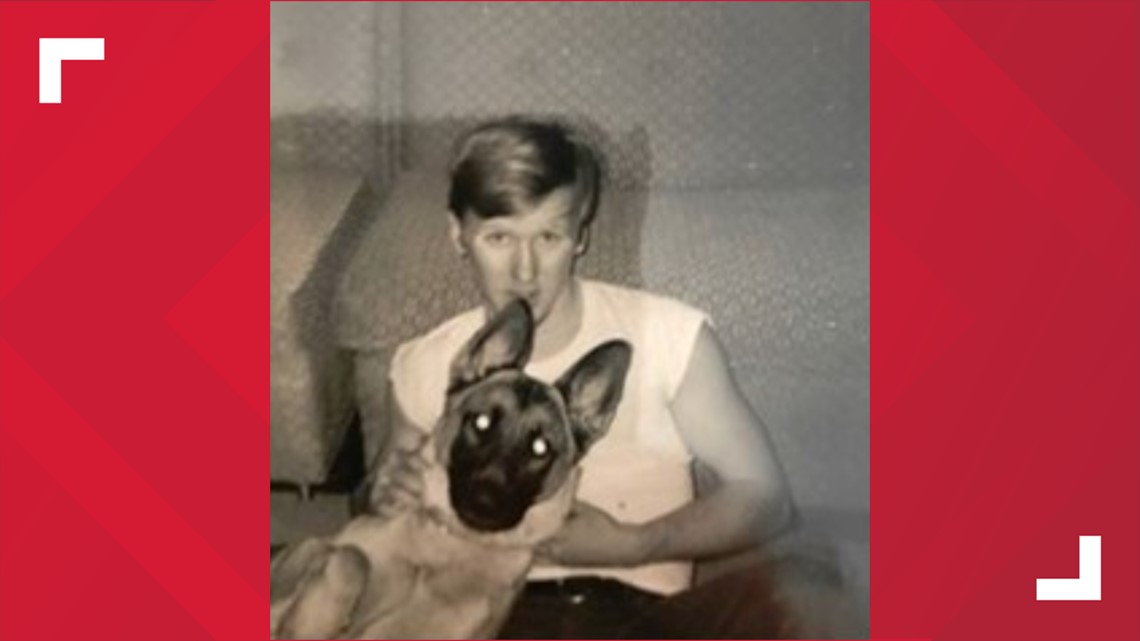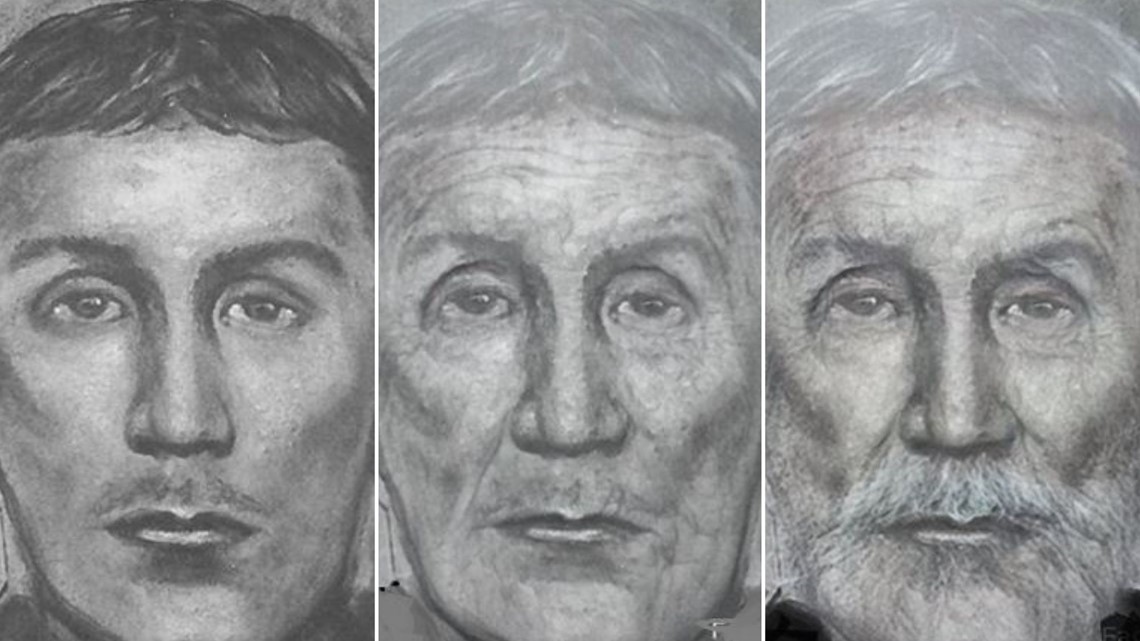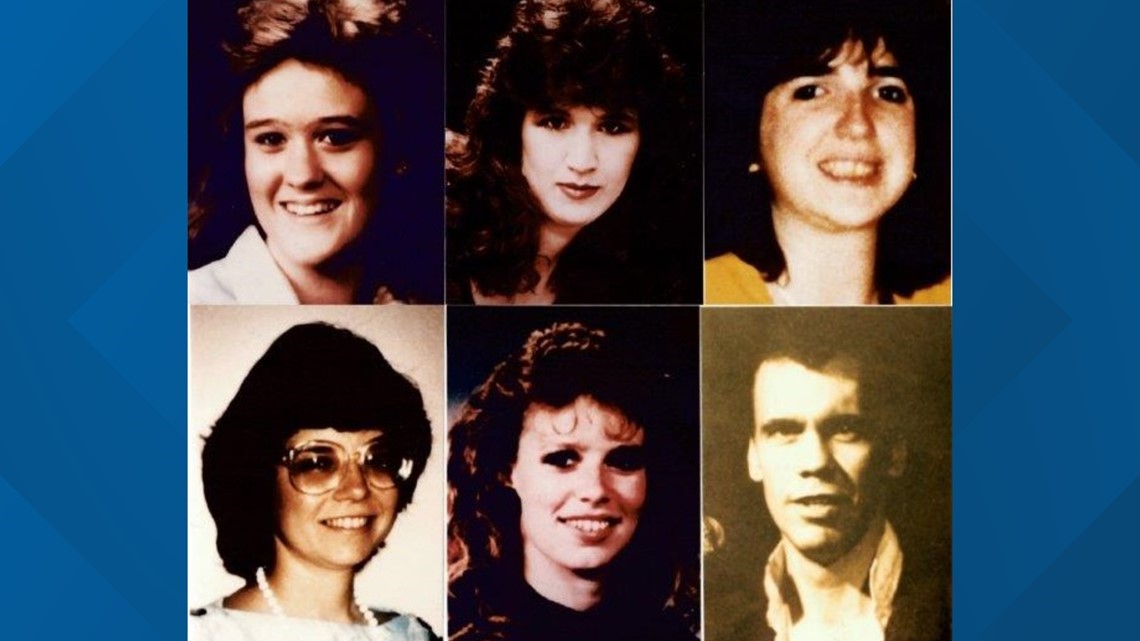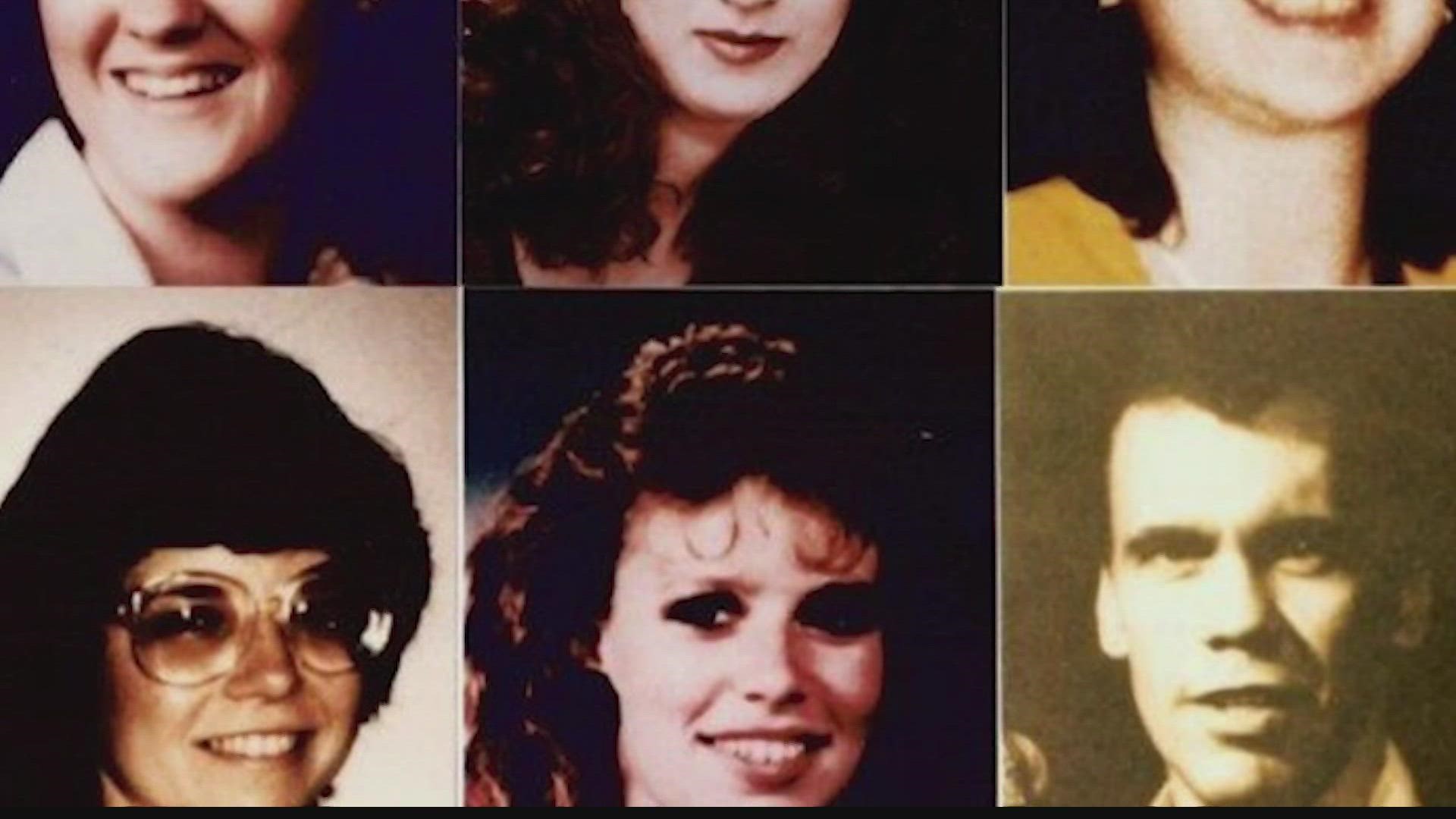TERRE HAUTE, Ind. — On April 8, 1992, Robin Fuldauer clocked into a Payless Shoe Store off Pendleton Pike, not five minutes away from Lawrence Central High School, her alma mater.
A coworker had called out, so she stepped in and set about the normal routine, selling shoes and making transactions.
It was an unremarkable spring day that may have stayed that way, had not a man come into the store sometime after lunch.
In broad daylight, Fuldauer was forced to the back of the Payless and shot execution-style.
Nearly three decades later, the day she died marks a grisly starting point; when a weekslong shooting spree that left six-store clerks in at least three states dead, began.
Over the next 29 days, young people in several states clocked into their jobs along I-70, not knowing they would be the next target.
The killer moved along a 1,200 mile stretch of I-70 between Wichita and Indianapolis, killing two women working alone in a bridal store before returning to Indiana for his next victim.
That was Michael McCown, 40, who was killed working at his mother's ceramics shop in Terre Haute.
Today, the retail complex houses a vape shop and catering business, surrounded by fast-food complexes and hotels.
The case files for the two Hoosier victims of the I-70 Killer remain open.
On Tuesday, Terre Haute police working the McCown case said they were in the process of trying to submit one piece of evidence for DNA testing.
Detective Bradley Rumsey said they would examine a variety of testing options.
"A lot of this evidence has been packaged and waiting for testing since 1992. So we want to get it to the lab. That's going to be the most expedient. It's not going to take a year to get it back kind of thing," Detective Rumsey said.
While they would not comment on which specific piece of evidence they were working to submit, THPD said their agency was considering private DNA testing labs.
RELATED: 'Somebody knows something': Victim's family reacts to renewed push to find I-70 serial killer
"We also want to make sure it's the lab that's best equipped to handle that piece of evidence because there are different methods and techniques that these DNA people use to actually collect that DNA and get a sample that gives them a profile. So, one lab might be much better at a certain way of doing things than another," he said.
If DNA evidence ends up being the thing that uncovers new insights into the I-70 Killer case, it would not be the first time that happened for the Terre Haute Police Department.
Pam Milam was 19 when her body was found in the trunk of her car on Indiana State University's campus back in 1972. She was tied up and strangled.


In the immediate aftermath of her death, police were left with no witnesses and no description of a suspect. One man who was accused of sexually assaulting students, then returning them to campus, was arrested. But authorities could not link him to Milam's murder.
What happened to Milam remained a mystery until 2019, when advanced DNA genealogy methods identified Jeffrey Lynn Hand as the killer.


It's that sort of outcome jurisdictions continuing to work the I-70 case hope for.
Throughout Kansas, Indiana and Missouri, detectives continue to work together to share evidence, meeting as a task force in early November.
Police in St. Charles, Missouri, where aspiring cartologist Nancy Kitzmiller was killed, also launched an online portal where people can submit tips about the I-70 Killer.
"Every case has some piece of evidence that can possibly yield a DNA sample that's going to be valuable for us to use. I think absolutely, there's a strong chance we can identify the person. There's a lot of ways. Maybe this guy is a convicted felon somewhere and has his DNA in the system. Maybe it'll show up in the system, called CODIS, which is a database for DNA. Maybe it'll match up to something there," Terre Haute Police Detective Troy Davis said.
Captain Roger Spurgeon heads the Indianapolis Metropolitan Police Department's homicide unit and inherited the case from a longtime mentor back in 1996.
He echoed the hope that a bit of evidence from one jurisdiction could solve long-simmering questions in another.
"If any one of our respective agencies is able to solve our particular case, then that likely means we're going to solve all of the cases. So, each of us wants the other to be successful in that, because that means that there will at least be some sense of justice for the families of the victims— of their loved ones," he said.
At the time of the murders, police believed their suspect was in his twenties or thirties, and hold onto the possibility that a young murderer may very well have turned to an old man. Age-enhanced sketches of the suspect were released in October 2021, to show the potential metamorphosis of the suspect.
Spurgeon hopes the photos could jog a memory.


"The two greatest ways that we have of being able to solve the case is through changing technology and changing relationships between people over time," he said. "We would love it if people would come forward like that when they know information - that they're no longer trying to protect those folks. But, many times, we have to go out and make contact with people. You know, if we find out that they do have a changed relationship, or if they end up having other encounters with the police, then sometimes that's when that comes out."
As technology changes, so too do detectives' theories of who the killer was, or what their motivations may have been.
The fact that the killings along I-70 did not continue after those 29 days in 1992 was notable to Captain Spurgeon.
“For him to not have continued doing these kinds of cases ... after doing so many in a relatively short period of time, begs some questions. Was he incarcerated? Or did he die? Or was he killed? Because it doesn’t seem likely, but for those two reasons he would have simply stopped."


In this case, though, the detectives leading the Fuldauer and McCown cases do not cling to any one theory too tightly.
That the I-70 Killer is dead or in jail is just one possibility among many that have accumulated over three decades of no answers.
Apart from theories or intangibilities, what both jurisdictions say they want most, is to reiterate that the families of people who lost their lives at the hands of a murderer are still hurting decades later.
RELATED: I-70 Killer: New sketches of suspected murderer who began killing spree in Indianapolis released
"Homicide is something no one is able to take back. And it's something that when you can hold someone accountable for that, it makes a big difference in the community because the community feels safer, and the family of that victim and friends of that victim. So it's important to close these cases," Detective Rumsey said.
Because every day all along a stretch of road a killer once made his hideaway, people continue coming and going. Along the many miles of I-70, the sun rises into the dawn of another day that Michael McCown and Robin Fuldauer will never see.

